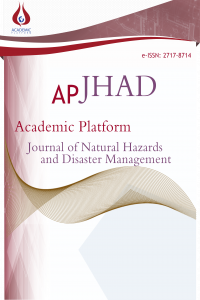Research on the Development of the Semi-Rigid Column Base of Reinforced Concrete: Experimental and Analytical Study on the Column Base with Cross Section Reduced Portion
Research on the Development of the Semi-Rigid Column Base of Reinforced Concrete: Experimental and Analytical Study on the Column Base with Cross Section Reduced Portion
Reinforced concrete, column semi-rigid, bending rigidity, burst stress,
___
- [1] Yoshimatsu Toshiyuki, Nishimura Noriyoshi, Konomi Mitsuo, Isemoto Noriaki, Yamaura Ichiro, Uozumi Masashi et al. “Development of Semi-rigid Connections for Cast-in-place Pile Head.” Summaries of technical papers of annual meeting Architectural Institute of Japan. 2006; Structural 4: 349-366.
- [2] Nagashima Ryutaro, Oda Minoru, Hirata Yuichi, Tano Kenji, Ito Akira and Takaoka Yuji. “An Analytic Study on Semi-rigid Connections for Pile top, Foundation Beam and Column Bottom of First Floor.” Summaries of technical papers of annual meeting Architectural Institute of Japan. 2015; Structural 4: 589-590.
- [3] Hirade Tsutomu, Sugimura Yoshihiro, Funayama Hikoshiro, Satio Tadashi and Murakami Masakatsu. “Experimental Study on Pile Head Joint of High Rotational Freedom System.” Summaries of technical papers of annual meeting Architectural Institute of Japan. 1999; Structural 4: 527-528
- Yayın Aralığı: Yılda 2 Sayı
- Başlangıç: 2020
- Yayıncı: Akademik Perspektif Derneği
Design for wind comfort. The CFD assessment over a future outdoor public space.
Investigation of Effective Bending Rigidity Considering Different Code Approaches
Gökhan DOK, Hakan ÖZTÜRK, Aydın DEMİR, Naci ÇAĞLAR
Flood risk analysis of residential areas at downstream side of Elmali dam
Farrokh MAHNAMFAR, Yasin ABDOLLAHZADEHMORADİ, Necati AĞIRALİOĞLU
Site Classification of Kocaeli Region Based on HVSR Method
Ali YEŞİLYURT, M. Rizwan AKRAM, Abdullah Can ZÜLFİKAR
Chemical and Biological Human Health Risk Assessment of Water Pollution Afterward of Earthquake
